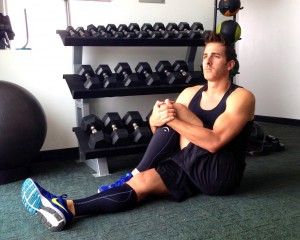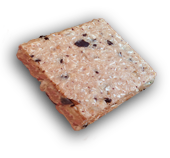 If you have spent any time in a gym, watched professional sports or seen an Under Armor commercial, you are aware of the existence of compression clothing. You’ve seen the ads and heard the hype, but is there any evidence to support the claims? Will your performance improve as a result of wearing these incredibly snug fitting garments?
If you have spent any time in a gym, watched professional sports or seen an Under Armor commercial, you are aware of the existence of compression clothing. You’ve seen the ads and heard the hype, but is there any evidence to support the claims? Will your performance improve as a result of wearing these incredibly snug fitting garments?
YES. Research by several respected exercise physiologists conclude that compression gear does in fact have many benefits to human performance such as:
- enhanced blood circulation to peripheral limbs.
- reduced blood lactate concentration during maximal exertion.
- enhanced warm-up via increases in skin temperature.
- increased vertical jump height
- improved repetitive jump power
- reduced muscle oscillation upon ground contact
- increased torque generated about joints, improving performance and reducing risk of injury. For example, assisting the eccentric action of the hamstring at the end of the swing phasewhile running.
- enhanced recovery following strenuous exercise by aiding in the removal of blood lactate and improving subsequent exercise performance.
- reduced delayed onset muscle soreness in the days following strenuous exercise.
- increased positive leg sensations both during and following strenuous exercise.
This shouldn’t be a huge surprise. Since the 1950’s compression stockings and other garments have been essential to post surgery recovery, as these garmets promote venous blood flow, decreasing venous stasis and preventing thrombosis, thus minimizing discomfort and increasing recovery speed.
Generally, I’m not one to promote purchasing expensive workout gear, but compression clothing is an area where spending the extra $ is worthwhile. In order for compression gear to truly enhance performance it has to meet a certain standard: provide a minimum pressure of 18 mm Hg at the ankle and 8 mm Hg at the mid thigh to mimic the hemodynamic effect of exercise and to increase venous return. Thus, ensure that you purchase a reputable brand that meets these requirements. I recommend C3fit or Skins versus the more generic manufacturers, such as Nike and Under Armor. Their fabric tends to be slightly thicker, yielding a higher compression ratio. As a general rule, the material should be thicker and fit tighter than regular spandex clothing.







